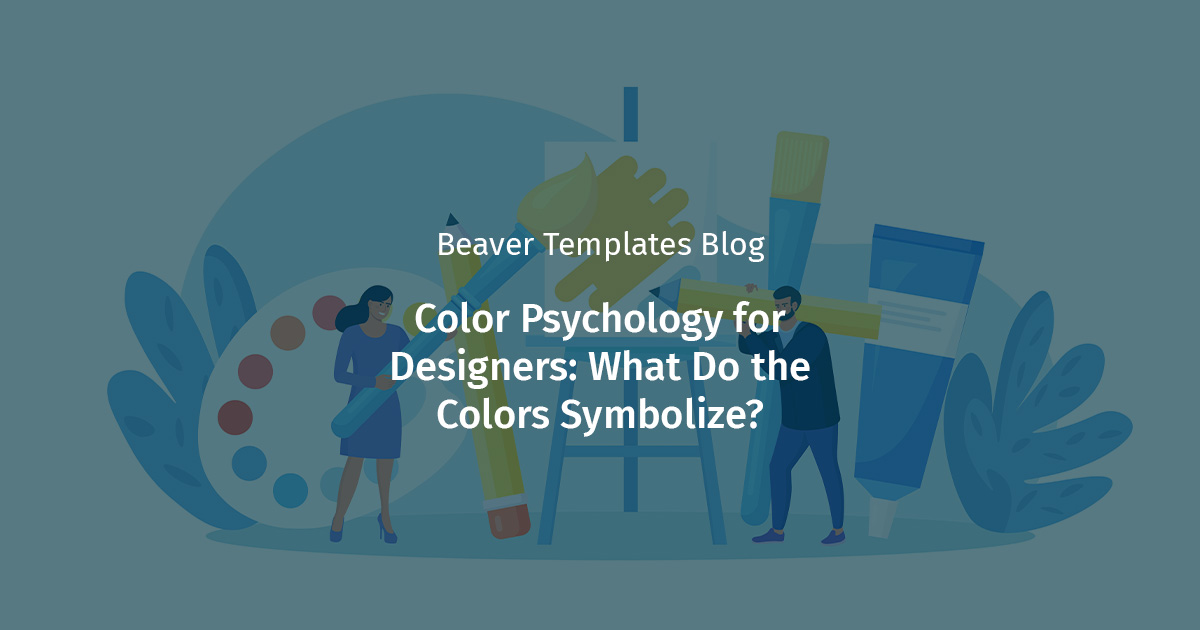As a web designer, digital marketer, or freelance creative, understanding color psychology isn’t just about aesthetics; it’s about effectively influencing user behavior and perception. Colors significantly impact emotions, decision-making, and even conversion rates on websites and landing pages. So, what do colors represent, and how can you leverage this knowledge in your designs? Let’s explore the fascinating field of color psychology and its implications for designers.
Understanding Color Psychology
Color psychology studies how different types of color affect human emotions, thoughts, and actions. It explores what colors represent and why certain hues trigger specific reactions. By strategically applying color psychology, designers can create more engaging, persuasive, and effective web experiences.
What Do Colors Mean?
Here’s a quick guide to common types of color and their psychological implications:
Blue – Trustworthy and Calm
Blue represents trust, reliability, and calmness. It’s widely used by businesses in finance, healthcare, and technology due to its association with dependability and peace.
Red – Bold and Passionate
Red symbolizes passion, urgency, and excitement. It attracts attention and prompts immediate action, making it effective for call-to-action buttons and sales promotions.
Yellow – Cheerful and Optimistic
Yellow signifies optimism, happiness, and energy. It’s perfect for designs that need to convey positivity, creativity, or youthful enthusiasm.
Green – Natural and Balanced
Green is linked with health, tranquility, growth, and wealth. It’s an ideal choice for wellness, eco-friendly businesses, and financial services.
Orange – Friendly and Energetic
Orange represents friendliness, vitality, and fun. It encourages enthusiasm and action, making it useful for businesses targeting energetic and youthful audiences.
Purple – Creative and Luxurious
Purple symbolizes luxury, sophistication, and creativity. It can elevate the perception of brands related to premium products, beauty, and art.
Pink – Playful and Compassionate
Pink conveys warmth, love, and playfulness. From soft blush tones to bold fuchsia, pink can create an inviting, emotionally resonant experience, especially for brands focused on lifestyle or beauty.
Brown – Reliable and Grounded
Brown symbolizes warmth, reliability, and authenticity. It’s great for earthy brands, organic products, and designs that aim to feel grounded and welcoming.
Black – Modern and Sophisticated
Black conveys sophistication, luxury, and authority. It’s often employed in designs that aim to highlight elegance or exclusivity.
White – Clean and Minimal
White symbolizes purity, simplicity, and clarity. It provides a clean backdrop, ideal for minimalist and modern design aesthetics.
Using Color Psychology in Web Design
Color choices play a key role in how users perceive and interact with your website. When you’re designing a website, understanding what colors represent can help you create a more engaging and emotionally aligned user experience. Start with a design that fits your layout needs, then tailor the color palette to match your brand’s personality and audience.
Enhance User Experience
Colors influence readability, usability, and user satisfaction. Ensure there is ample contrast between text and background colors to enhance readability and reduce eye strain.
Improve Conversion Rates
Use color strategically for buttons, banners, and links to boost click-through rates. For example, a red or orange call-to-action button can significantly increase conversions compared to cooler colors like blue or green.
Reinforce Brand Identity
Consistent use of color strengthens brand identity and memorability. Your choice of colors should align with brand values, ensuring a coherent visual message across your digital presence.
Practical Tips for Designers
- Limit your palette: Choose 2-3 primary colors to maintain visual coherence.
- Test for accessibility: Ensure your design is colorblind-friendly by using online tools such as Adobe Color.
- Consider cultural differences: Colors can have varied meanings across cultures, so consider your target audience’s cultural context.
Applying Color Psychology with Beaver Builder Templates
Our website templates at Beaver Templates offer a flexible foundation for creating professional websites. While each template comes with a ready-made design, you can easily customize the color palette to align with your brand and audience. For example, you might swap in calming blues and greens for a wellness brand, or opt for bold oranges and purples to convey energy and creativity for a marketing agency.
Explore our collection of customizable website templates and find the perfect starting point for your next project. With just a few color updates, you can make any design truly your own.
Resources for Further Learning
Enhance your understanding of color symbolism and psychology with these resources:
Final Thoughts
Leveraging color psychology effectively transforms your designs from merely aesthetic to strategically influential. By understanding what colors represent, you can significantly improve user engagement, reinforce branding, and boost conversion rates. Visit Beaver Templates to find beautifully designed, color-conscious website templates that make your design process smoother and more effective.


